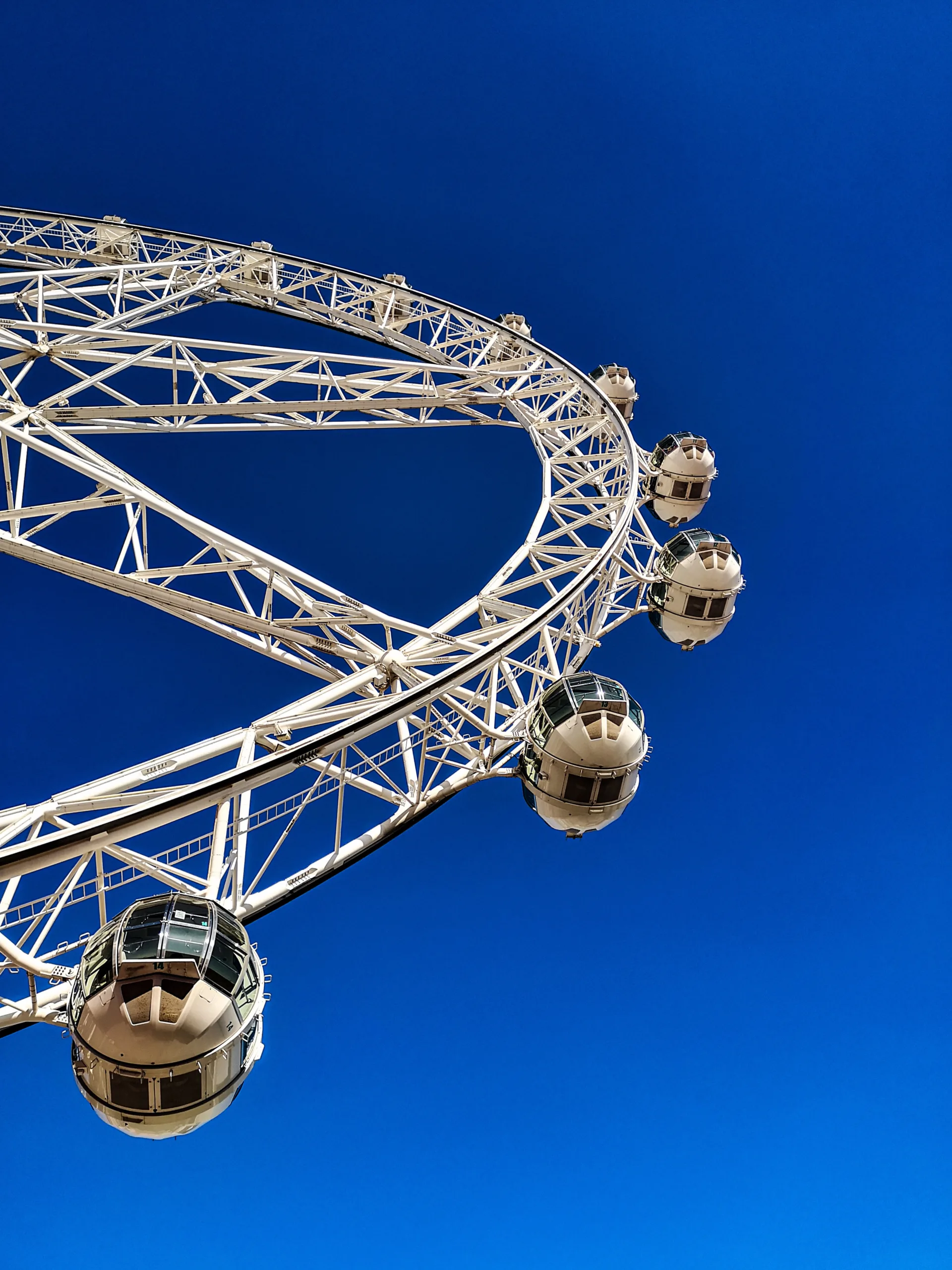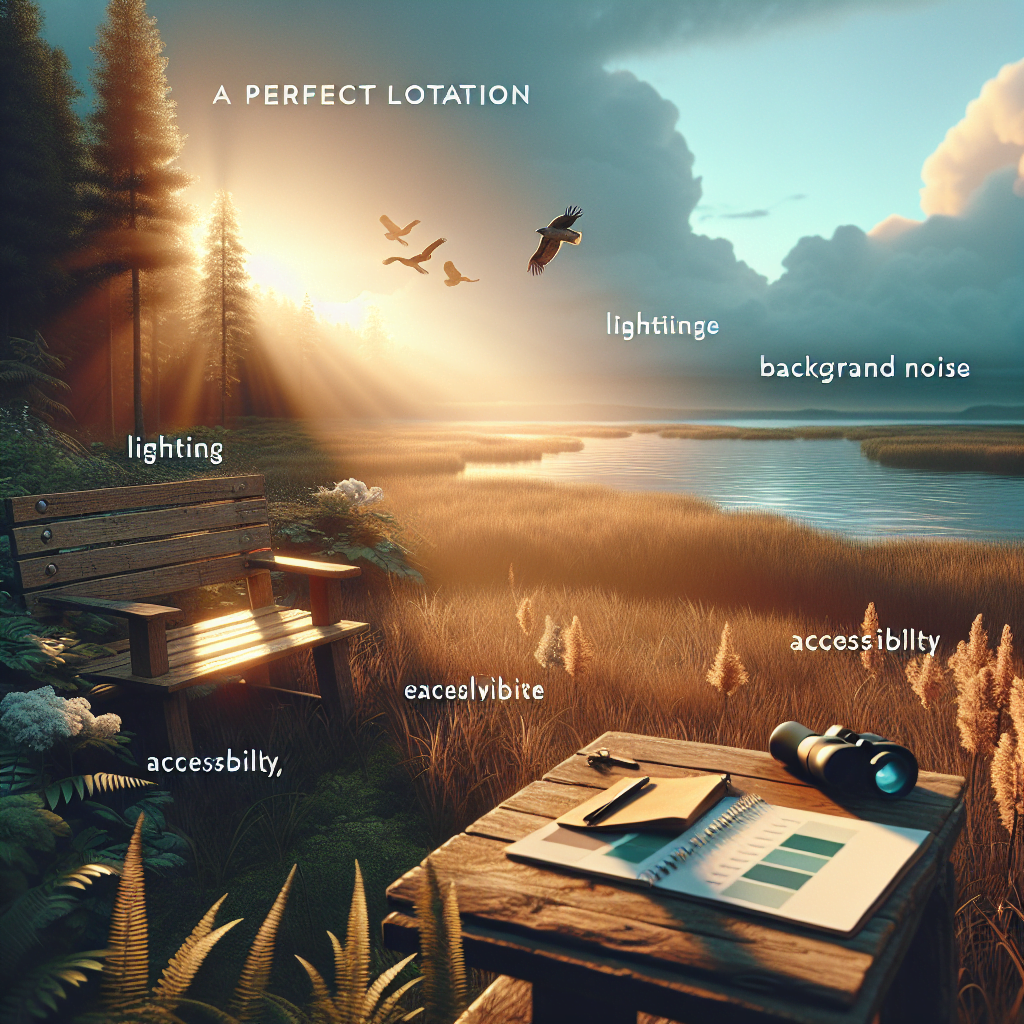Are you struggling to find the perfect location for your observation sessions? Whether you are a student conducting research or a professional gathering data, selecting the right setting can greatly impact the quality of your observations. In this article, we will explore some key factors to consider when choosing a location for your observation sessions. From the level of privacy to the accessibility of the site, we will provide you with useful tips to ensure that your observation sessions are conducted in the most effective and comfortable environment possible.
Table of Contents
Factors to Consider
When choosing the right location for your observation sessions, there are several important factors to consider. These factors will help ensure that the chosen location is suitable for your research objectives and provides a comfortable and conducive environment for observation.
Purpose of the Observation
First and foremost, it is essential to determine the purpose of your observation. Are you conducting research for a scientific study, market research, or educational purposes? The purpose of your observation will influence the type of location you choose. For example, if you are studying classroom dynamics, a classroom would be an ideal location.
Accessibility
Accessibility is another crucial factor to consider. You want to choose a location that is easily accessible to both the observer and the subjects. Consider the proximity to transportation, parking availability, and any special accommodations needed for individuals with disabilities. Accessibility ensures that your observation sessions are convenient for all involved parties.
Privacy
Privacy is essential when conducting observation sessions, especially if you are observing sensitive or personal behavior. Choose a location that provides sufficient privacy to ensure the participants feel comfortable and are not self-conscious about being observed. A private conference room or a secluded corner in a library may be suitable options.
Noise Level
The noise level in your chosen location can significantly impact the quality of your observations. If you need to focus on verbal interactions or conversations, it is crucial to select a quiet environment where background noise is minimal. On the other hand, if your research involves studying public spaces with high noise levels, such as a bustling train station, choosing a location that reflects the natural noise environment is crucial.
Environmental Factors
Take into account the environmental factors in your chosen location. Consider the lighting, temperature, and overall ambiance of the space. These factors can affect the behavior of participants and influence the accuracy of your observations. For example, if you are studying relaxation techniques, a serene outdoor park with plenty of natural light might be ideal.
Availability of Resources
Consider the availability of resources that may be required during your observation sessions. These resources can include equipment such as cameras, recording devices, or specific props necessary for your research. Ensure that your chosen location has the necessary facilities to accommodate your needs, such as power outlets or internet access if required.
Safety
Safety is paramount when choosing a location for observation sessions. Ensure that the chosen location is safe for both the observer and the participants. Evaluate potential risks, such as uneven terrain, slippery surfaces, or any potential hazards that may compromise the well-being of individuals involved. Prioritize the safety and well-being of all parties involved in the observation.
Comfort
Participant comfort is crucial when conducting observation sessions. Choose a location where participants can feel at ease and behave naturally. This will increase the validity of your observations and ensure that participants are not influenced by discomfort or unease. Consider factors such as seating arrangements, temperature control, and overall comfort levels when selecting a location.
Cost
Cost considerations are an important aspect when choosing a location for your observation sessions. Evaluate your budget and determine what resources you can allocate towards securing a suitable location. Consider any potential fees or expenses associated with the chosen location and ensure it aligns with your financial limitations.
Flexibility
Lastly, consider the flexibility of the location. Depending on the nature of your research, you may require a location that can be easily modified or adapted to accommodate different scenarios. Flexibility ensures that you can make necessary adjustments during your observation sessions without constraints.
Research and Preparation
Before conducting your observation sessions, thorough research and preparation are necessary to establish a solid foundation for your research. The following steps will guide you in this preparation phase:
Define Observation Objectives
Clearly define your observation objectives. What specific behaviors, interactions, or outcomes are you looking to observe? Having a clear objective will guide your choice of location and observation techniques.
Identify Target Audience
Identify your target audience or participants for the observation sessions. Are they students, shoppers, or professionals? Understanding the demographic and characteristics of your target audience will help in selecting a suitable location where they are likely to engage in the desired behavior.
Decide on Observation Techniques
Choose the appropriate observation techniques for your research objectives. There are various methods, such as naturalistic observation, structured observation, or participant observation. Consider which technique will yield the most accurate and relevant data for your research.
Develop Observation Protocol
Develop an observation protocol that outlines the guidelines and procedures for your observation sessions. This includes specifying the role of the observer, ethical considerations, data collection methods, and any necessary documentation.
Determine Duration and Frequency
Determine the duration and frequency of your observation sessions. How long do you need to observe each session, and how many sessions are required? These factors will depend on the complexity of your research objectives and the behaviors you aim to observe.

Indoor Observation Locations
Indoor observation locations provide controlled environments for research and offer advantages such as privacy and reduced external influences. Consider the following indoor locations for your observation sessions:
Conference Rooms
Conference rooms are versatile spaces that can be easily adapted to accommodate different research scenarios. They offer privacy and controlled environments suitable for a variety of observation purposes.
Classrooms
Classrooms provide an ideal setting for educational research or studying group dynamics. Observing classroom interactions can offer valuable insights into teaching methods and student behavior.
Laboratories
Laboratories are suitable for scientific observation, where precise control over variables is necessary. They provide a controlled environment for detailed scientific research and experimentation.
Libraries
Libraries offer quiet and controlled environments, making them suitable for observing individual behaviors such as studying or reading habits. They provide opportunities to observe concentration levels and information-seeking behaviors.
Waiting Rooms
Waiting rooms, such as those found in healthcare settings or airports, offer opportunities to observe people’s behavior while they wait. This can be useful for market research or understanding customer experiences in service-oriented industries.
Outdoor Observation Locations
Outdoor observation locations provide a naturalistic setting for research and allow for the observation of behaviors in real-world contexts. Consider the following outdoor locations for your observation sessions:
Public Parks
Public parks offer a diverse range of behaviors and interactions within a natural and relaxed setting. They are suitable for studying social interactions, physical activities, and community behaviors.
Cafes and Restaurants
Cafes and restaurants provide opportunities to observe social interactions, dining behaviors, and customer experiences. These locations offer a vibrant and dynamic environment for qualitative observation.
Shopping Centers
Shopping centers are ideal for studying consumer behavior, retail experiences, and interactions between shoppers. The bustling and diverse environment provides a multitude of observation possibilities.
Train Stations
Train stations serve as busy hubs of activity, making them suitable for observing people’s behavior during commuting or travel. They offer opportunities to study crowd dynamics and transportation-related behaviors.
Playgrounds
Playgrounds are excellent locations for observing children’s behavior, social interactions, and physical activities. They provide insights into childhood development, play patterns, and socialization.

Virtual Observation Locations
Virtual observation locations offer the convenience of remote monitoring and data collection. In today’s technologically advanced world, consider the following virtual locations for your observation sessions:
Online Communities
Online communities, such as forums or social media platforms, allow for remote observation of discussions, interactions, and user behaviors. They offer access to a wide range of participants and diverse online environments.
Web Conferencing
Web conferencing platforms enable real-time observation of meetings, interviews, or group discussions. This virtual observation technique eliminates geographical constraints and provides the convenience of remote data collection.
Screen Recording Software
Screen recording software allows for the direct observation of participants’ digital activities and interactions. This is particularly useful for usability testing or studying online behavior.
Crowdsourcing Platforms
Crowdsourcing platforms provide opportunities for remote observation of tasks or interactions performed by a large group of participants. These platforms allow for the collection of diverse data from a wide range of individuals.
Video Observation Tools
Video observation tools enable remote access to live video feeds, providing opportunities for real-time observation of behaviors or events. These tools offer the advantages of convenience and flexibility for observation sessions.
Alternative Observation Locations
In addition to traditional indoor and outdoor locations, consider alternative locations that offer unique opportunities for observation:
Natural Environments
Natural environments, such as forests, rivers, or mountains, provide opportunities for the observation of wildlife or nature-based interactions. These locations offer a distinct setting for research on ecological behaviors or animal behavior studies.
Home Environments
Home environments allow for observation of behaviors in a familiar and comfortable setting. This can provide insights into daily routines, family dynamics, lifestyle choices, and household interactions.
Workplaces
Workplaces offer opportunities to observe professional behaviors, team dynamics, and work-related interactions. These environments provide insights into organizational behavior, leadership styles, and productivity.
Recreational Spaces
Recreational spaces, such as sports arenas or leisure centers, offer opportunities to observe physical activities, social interactions, and crowd dynamics. These locations provide a unique context for studying recreational behaviors.
Art Galleries or Museums
Art galleries and museums offer opportunities for observational research on cultural behaviors, visitor experiences, and engagement with artistic or historical artifacts. These locations provide insights into audience behaviors and preferences.

Consideration of Ethical Issues
When conducting observation sessions, it is crucial to consider and address ethical issues to ensure the rights and well-being of participants. Some ethical considerations include:
Informed Consent
Obtain informed consent from participants, ensuring they are fully aware of the research objectives, the nature of the observation, and their rights as participants. Transparency and honesty are key to establishing trust.
Confidentiality
Ensure the confidentiality and anonymity of participants’ personal information. Protecting their privacy is essential to maintain trust and comply with ethical standards.
Anonymity
Consider whether to make your observations anonymous or identify participants in your research. Carefully weigh the benefits and potential risks associated with anonymity, keeping the participants’ best interests in mind.
Debriefing and Feedback
Offer participants an opportunity to provide feedback, ask questions, or share their experiences after the observation session. Debriefing ensures that participants understand the purpose of the research and have an opportunity to voice any concerns or questions.
Respect for Participants
Respect participants’ rights, cultural beliefs, and personal boundaries throughout the observation process. Be mindful of any potential harm or discomfort caused by the observation and ensure that participants are treated with dignity and respect.
Trial Observation Sessions
Before conducting your main observation sessions, it is beneficial to perform trial sessions to test the suitability of the chosen location and refine your observation approach. Consider the following steps for trial observation sessions:
Testing Location Suitability
Assess the suitability of the location by conducting a trial observation session. Observe whether the environment meets your research objectives, the noise level is acceptable, and the logistics of the location are favorable for observation.
Adjusting Observation Approach
Based on the trial observation session, make adjustments to your observation approach as needed. Consider any limitations or challenges encountered during the trial session and modify your protocol accordingly.
Documenting Feedback
Document feedback from the trial observation session, both from participants and the observer. This feedback will help refine the observation process, address any concerns, and improve the overall experience for all parties involved.
Implementing Changes
Implement any necessary changes or adjustments to your observation protocol based on the feedback and lessons learned during the trial observation session. This ensures that your main observation sessions are more effective, accurate, and efficient.

Data Collection and Analysis
Once your observation sessions are complete, it is crucial to collect and analyze the data obtained to draw meaningful insights. Consider the following steps for data collection and analysis:
Recording and Documentation
Record and document the observations made during the observation sessions. This can include written notes, audio recordings, photographs, or videos. Ensure that the data collection methods align with the research objectives and ethical considerations.
Transcription and Translation
If necessary, transcribe and translate the collected data for further analysis. This step allows for a comprehensive understanding of the observed behaviors and facilitates the comparison and categorization of data.
Data Coding and Categorization
Code and categorize the collected data based on themes or patterns observed. This step helps identify key findings and organizes the data in a systematic manner for analysis.
Qualitative and Quantitative Analysis
Analyze the collected data using both qualitative and quantitative methods. Qualitative analysis involves interpreting the data based on themes, meaning, and context. Quantitative analysis involves statistically analyzing numerical or quantitative data for patterns and trends. A combination of both approaches can provide a comprehensive understanding of the observed behaviors.
Conclusion
Choosing the right location for your observation sessions is crucial to the success of your research. By considering factors such as purpose, accessibility, privacy, noise level, and environmental factors, you can ensure that your chosen location provides a conducive environment for accurate and meaningful observations. Thorough research and preparation, selecting the appropriate observation techniques, and considering ethical issues will further enhance the validity of your observations. With careful planning and consideration, you can conduct successful observation sessions and generate valuable insights for your research.

